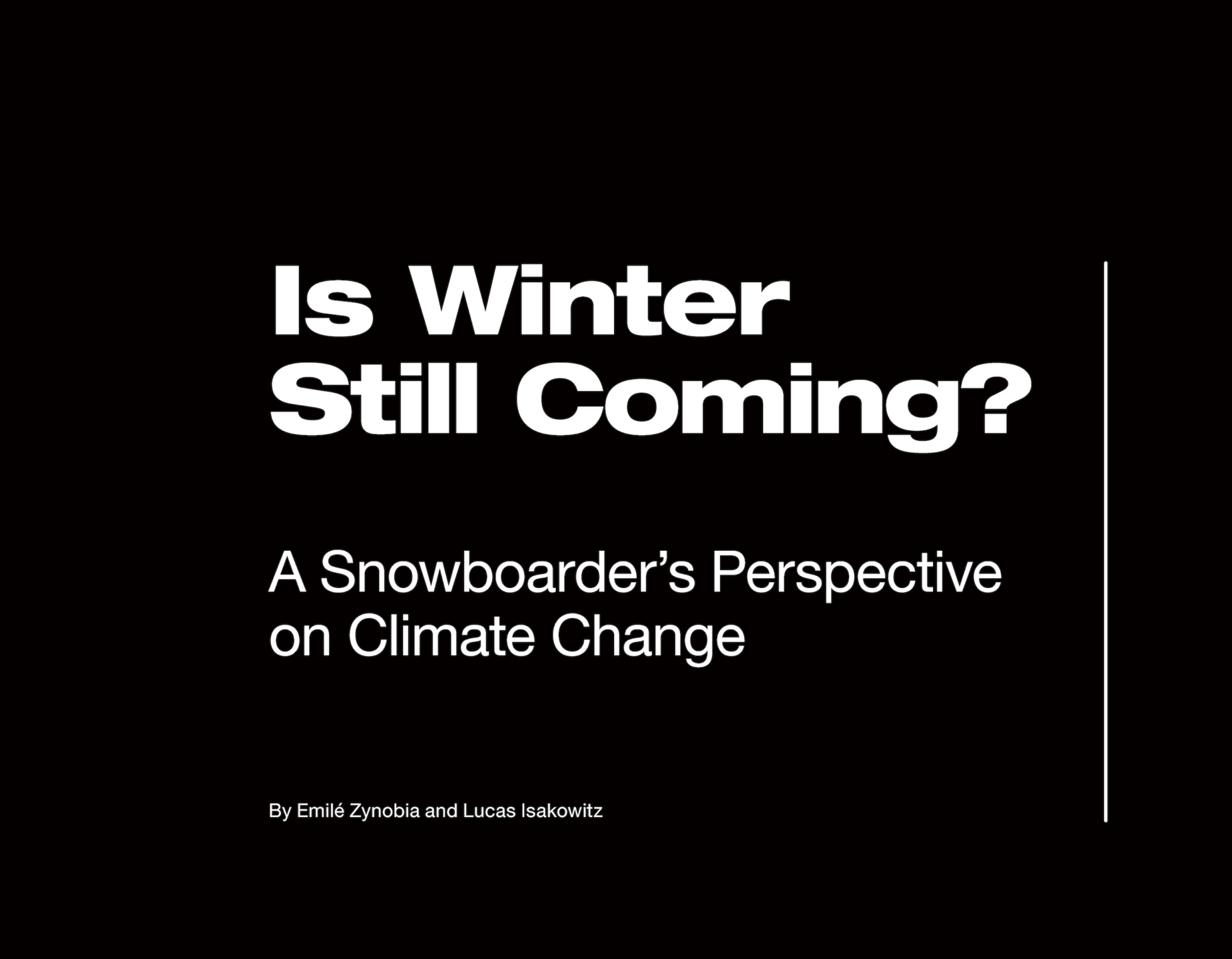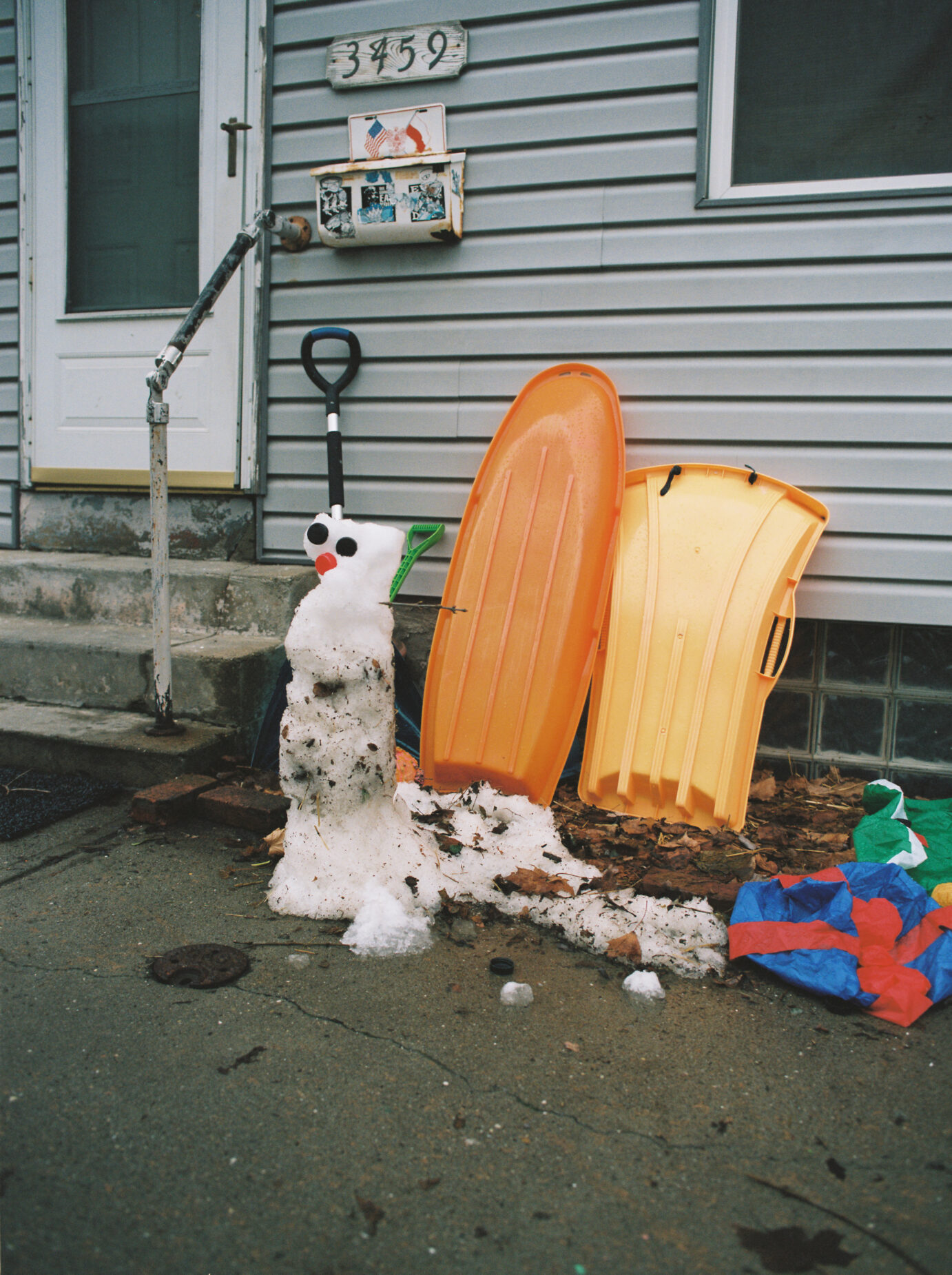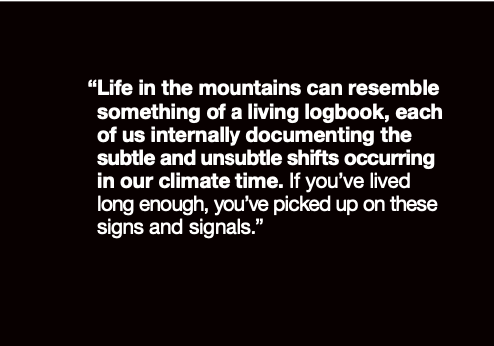
I have something to admit: I thought we had more time. More years to be carefree, riding winter to winter, like bookends holding all the other snow-free seasons in between. I spent the early years of my academic career reading articles on the science of climate change, selfishly thinking at least the worst wouldn’t hit in my lifetime. Truth be told, what we are seeing globally is happening faster and more intensely than the climate models predicted: the planet has already warmed nearly 1.1 degree C, and will probably reach 1.5 degrees C of warming within the next two decades.
Life in the mountains can resemble something of a living logbook, each of us internally documenting the subtle and unsubtle shifts occurring in our climate time. If you’ve lived long enough (20+ years or more), you’ve picked up on these signs and signals. You’ve noticed these days winter takes longer to show. Every year the snowpack seems to settle more inconsistently and erratically. More rain instead of snow. Dry spells that stretch longer. Resorts shooting snow guns more often to fill in thin strips of white. This isn’t your mind playing tricks on you; it’s happening, and it’s a consequence of the slow changing but rapidly approaching reality of climate change. The new global order.
The science is clearer than ever, but we still have our heads in the sand–at best refusing to think about what’s coming down the pipeline, and at worst denying that it’s happening at all. These reactions are natural. Climate change isn’t like so many of the problems our ancestors dealt with. We’re programmed to run from or towards prey and predators, to think on what’s directly in front of us. It’s much harder to visualize how an invisible gas is warming up the planet. But then again, so much of what we do is unnatural compared to how our ancestors hunted and gathered. (Imagine explaining snowboarding to a caveman.)
According to the most recent report from the Intergovernmental Panel on Climate Change (IPCC), our window to avoid the worst impacts of climate change is narrowing, especially if we don’t meaningfully decarbonize our global society in 10 years. Remember how fast your last ten years went by? Yeah, me too. When we arrive at the scenario where we surpass warming the planet beyond 1.5-2°C (that’s about a 2.7-3.6°F increase) above pre-industrial levels, lack of rideable snow is going to be the least of our worries. This is scary stuff, not only when we take stock of what it all means for our snowy mountains.
The question is: Is winter still coming?

Mt. Baker Resort has long been one of the core centers of snowboarding culture in Washington because of its location in the North Cascades, where moisture-laden Pacific systems dump upwards of 600 inches on the mountain in any given year. In one epic winter of 1998-99, Baker received 1,140 inches of snow. The halls of Baker’s Heather Meadows Lodge house a museum of photographic history depicting overwhelming amounts of snow from winters past. But Mt. Baker resort is slated to be one of the earliest casualties of climate change due to its low elevation of 5,089 ft.
“Oftentimes, it will be 33°F and pouring rain at the base of Mt. Baker, while it’s 29°F and dumping feet of snow at the top,” explains local glaciologist and professor of Geology at Whatcom Community College Elizabeth Kimberly. “It’s often a matter of 1 or 2°F, and as temperatures warm with climate change, that rain-snow elevation band will creep higher and higher on the mountain.”
This intersection of low elevation and increasing air temperature doesn’t bode well for other nearby resorts characterized by the thin rain-snow band, like Snoqualmie and Steven’s Pass. According to some of the latest science, the snowpack in the Pacific Northwest is predicted to decrease by about 70% by 2100. What does that mean for the next 20-30 years? Given that we are locked into warming until at least mid century 2050, Bakerites and Western Washington can expect to see more of what is happening now: shortened winters, more rain on snow events at increasingly higher elevations, longer dry spells interspersed with dramatic snow events, and warmer storms. Studies from The Climate Impacts Group suggest that the average length of snow seasons will decrease by up to 46% by the 2040s. As the window for winter shortens, once dependable corn-snow (crystalized snow due to repeated melting and freezing) cycles will continue to fade away due to a lack of cold nights and warmer spring air temperatures rapidly melting the snowpack.

But what does this mean for higher elevation zones like Mt. Hood in Oregon? Home to Palmer Glacier and one of the most legendary year-round snowboard spots, Mt. Hood is still part of the Cascades and generally shares the same maritime snowpack as the Pacific Northwest at large.
“When I go to ski resorts, I feel like I’m a doctor, telling patients that they have cancer,” says Anders Carlson, PhD in Glacial Geology & Oceanography and president of the Oregon Glaciers Institute. He points to the winter of 2015 as an example of what the snowpack of the future may resemble. That year, Mt. Hood ski resorts like Timberline closed more than a month earlier than planned as they experienced the worst snowpack on record. “For the mountains of the PNW region, it’s like having a hose on all the time,” said Carlson “The question becomes, will it be cold enough to turn water into snow?”
Carlson, who consults with resorts on the future of their snowpack, goes on to explain that as the tallest mountain in the Cascades, Mt. Hood has a better outlook than other Oregon-based ski resorts. Still, the long-term diagnosis for the region does not look promising. Combing through local historic data with IPCC models, Carlson has tried to estimate the probability that a 2015-style winter occurs in a climate-changed world. Under the “business as usual” model where warming hits over 4 degrees C by 2100, the historic low-snow of the PNW’s 2015 winter would have an 80% chance of occurring every single year. For the “ideal” scenario of limiting warming to 2 degrees C by 2100, the chances of a 2015-style winter drop are about 17% annually, which is lower but still troubling.
“We’ll start having these bad years more frequently,” says Carlson. “And how many bad years does it take until the revenue model for a ski resort doesn’t work anymore?”
The snowpack in the region has already changed and is going to keep changing. Carlson explains that motorists traveling to Timberline Lodge used to put their chains on at Sandy, Oregon, but now put them on at Government Camp, a roughly 3,000 foot increase in elevation. “That snowline is just going to keep marching upwards.”
But what about other regions? Can winter lovers find refuge in higher elevation areas like North America’s Intermountain West? Maybe.

Amato Evan is now an Associate Professor of Climate Sciences at The Scripps Institution of Oceanography, but he grew up around Salt Lake City, riding at Snowbird and Brighton when snowboarding was still in its infancy. “It was so punk back then,” he says. “I remember when it was all cloth bindings and wintersticks, and now my kid’s friends’ parents are snowboarding.” From his scrappy years as a young snowboarder, Evan’s life has become laser-focused on understanding how the snowscape is shifting in a climate changed world. “When I was snowboarding at 14, I wasn’t thinking of how long the seasons were,” Evan says. “But my kids are just starting to ski and when they are my age, I guarantee they will definitely be able to see the change in snow. I suspect we are all going to see a noticeable change.”
Along with his colleague Ian Eisenman, Evan’s research uses SNOTEL data to pinpoint which regional snowpacks are most sensitive to coming temperature shifts. “It’s helpful to think of snowpack in terms of sensitivity, not just how much less volume snowfall we will see,” says Evan. And what his work shows is that interior high elevation snowpacks like those spanning parts of Wyoming, Colorado, Idaho, and Utah may have more room to experience warmer but still snow-filled winters. “You have to think about places where ski resorts are already in a marginal area, if the snow season is like half the year, you have quite a bit of buffer.”
It isn’t that climate change won’t affect the snowpack in the Tetons. It’s that a temperature change of a few degrees C is unlikely to shift winter temperatures above freezing. “Global warming isn’t affecting everywhere the same,” Says Evan, and there’s hope in a place like Jackson. Simply put, what happens will significantly depend on an area’s geographic location, and even localized storm patterns. For instance, within the Salt Lake City region, most of the snow dumps on the Cottonwood Canyon side of the mountains. That means that the prognosis for areas like Snowbird or Brighton look fairly decent, while resorts on the other side of the rainshadow already have less reliable snow and therefore a lower margin to deal with climate change. Evan says, “I look at a place like Park City and think that’s not a great place to buy real estate.”
Even for the locations that seem well suited to weather warmer winters, there will likely be a cost. Anyone who has been to Jackson Hole or Snowbird in the last 5 years will know the way these mountains have become mazes of cars and bodies–frothy aggravated folks from all around jockeying to get on the lifts. If warming doesn’t kill the vibe, the rapidly deteriorating riding experience will.
When asked what he would tell winter lovers today, Evan says “Enjoy the mountains as much as you can.”
Our lives are fractions of seconds in a timescale we will never fully comprehend. Maybe the true gift of winter is the reminder of our insignificance. We are each here for a short time, leaving behind ephemeral signatures in the snow. Climate change can be seen not as a fight, but an opportunity to reflect on the legacy that we leave, and what it means to live a good life. The changes are coming, and are largely outside of our individual control, but that doesn’t give us a hall pass to neglect our agency. The collective awareness and energy of the snowboarding community can help alter the course we’re on. Together, we are a living logbook that documents both the subtle and drastic shifts occurring in our climate time. In a world that’s still figuring out how to admit that climate change is even real, the stories we tell become more and more valuable. The spring melt erases the evidence of our powder-turns, but our impact will be felt in the mountains long after we’re gone."


